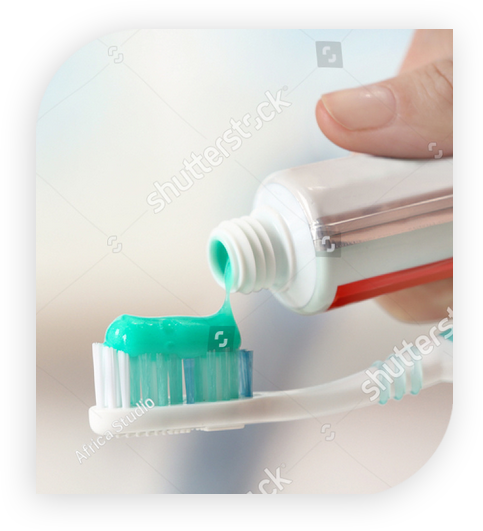Toothpaste
Share This Article
Brushing your teeth, makes us feel like we’re taking good care of our body. But toxic ingredients in toothpaste could be doing more harm than good.
For something that 69 percent of people put in their mouth at least twice a day, toothpaste is surprisingly toxic. While traditional toothpaste is effective at removing and preventing plaque build-up, preventing cavities, and fighting gum inflammation, a lot of its ingredients are not safe.
The most common reason parents call Poison Control is because their child has swallowed (or intentionally eaten) toothpaste.
For something that 69 percent of people put in their mouth at least twice a day, toothpaste is surprisingly toxic. While traditional toothpaste is effective at removing and preventing plaque build-up, preventing cavities, and fighting gum inflammation, a lot of its ingredients are not safe.
The most common reason parents call Poison Control is because their child has swallowed (or intentionally eaten) toothpaste.

Potential Toothpaste Health Problems

Toothpaste Ingredients used in your mouth bypass your body's protective filtering systems and are absorbed directly into your blood. Overexposure to these toxins can lead to cancer, birth defects, renal failure and death. Many toothpaste ingredients banned in Canada, are sold in the U.S. and are linked to child overactivity and more.
While the small concentrations of toxic toothpaste chemicals may not cause any immediate problems they can still significantly affect the rest of the body’s overall health. This includes bacterial pneumonia, breast cancer, cardiovascular disease, dementia, diabetes, irritable bowel syndrome (IBS), osteoporosis, prostate cancer, and unexplained weight gain.
Toothpaste Harm to Your Teeth
Teeth become sensitive when tooth enamel is worn away, and the permeable tooth layer below, known as dentin, is exposed. Many toothpastes are overly abrasive and actually strip away tooth enamel, which may not grow back. The 1st protocol a dentist will recommend for patients with sensitive teeth is a less abrasive toothpaste.
Toxins Ingredients in Toothpaste
1
Artificial Coloring is one of many artificial colorants meant to make toothpaste more visually pleasing. According to a 2012 study from Neurotherapeutics, artificial coloring has a direct link with overactivity, inattention, and impulsiveness in children.
2
Carrageenan is used as a thickening agent and can cause inflammatory skin conditions like acne, intestinal issues, colon ulcerations, and cancer. While there is a food-grade version of carrageenan and an alternative degraded form, which is the known carcinogen form, it’s best to stay away from carrageenan in both your food and your dental care products.
3
Diethanolamine (DEA) is added to toothpaste to create a greater foaming effect, but it is a hormone disrupter. DEA is also banned in Canada cosmetics, which begs the question of why the U.S. has not done the same.
4
Fluoride is added to most traditional toothpaste due to this chemical’s ability to decrease the risk of cavities and tooth decay. While research has shown that a small amount of fluoride can contribute to stronger and healthier teeth and gums, many believe it is simply not worth the risk.
5
Fluoride ingestion can ultimately lead to poisoning, depending on the amount, leaving our smallest teeth-brushers the most vulnerable. (It takes much less fluoride to negatively affect a child than it would an adult.) In fact, 80 percent of fluoride poisoning cases were reported in children under age six.
Fluoride is a chemical additive that comes with an acute toxicity warning from the Food and Drug Administration (FDA).
6
The acute toxic effects of fluoride include nausea and vomiting, hypocalcemia, tetany of the hands and feet, hypersalivation, hypotension, failure of the renal and respiratory systems, and coma and convulsions that can lead to death. The chronic effects include dental fluorosis, skeletal fluorosis, gastric irritation, numbness, and muscular spasms, birth defects, cancer, and an insufficient renal system.
7
Parabens are preservatives that allow toothpastes to sit on the store shelves longer without expiring. More research is needed on the side effects of paraben exposure, but they are thought to increase the risk of breast cancer and other health complications. Parabens may also bio-accumulate in the body, which means they build-up inside our body faster than our body can get rid of them.
8
Propylene Glycol primary job is to decrease the surface tension between two liquids, a liquid and solid, or a gas and liquid. Animal studies have shown propylene glycol to be a long-term toxic ingredient that should be entirely avoided, especially in children. To further convenience you propylene glycol is used in antifreeze.
9
Sodium Lauryl sulfate (SLS) makes toothpaste foam, but it is also a popular insecticide, so the same ingredient you’re putting in your mouth can kill insects. It is known by many names a few include A13-00356, Akyposal SDS, Aquarex methyl, Monododecyl ester, Monododecyl, sulfuric acid monododecyl and many more.
10
Titanium Dioxide (TiO2) is an inorganic chemical compound that is widely used in toothpaste because it adds toothpaste’s signature white color. While we don’t swallow toothpaste and therefore swallow titanium dioxide, the membranes inside our mouths may very well absorb concentrations of titanium dioxide. There is a concern that titanium dioxide may be a carcinogen that could negatively affects the body’s nonreproductive organs.
11
Triclosan was banned from hand soaps and body washes in 2017.However, you still might find it around, so be careful when reading oral care labels. Triclosan disrupts the hormones in the thyroid, causes cancer, and creates antibiotic-resistant strains of bacteria.









Leave a Reply